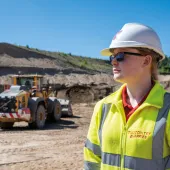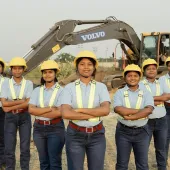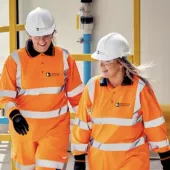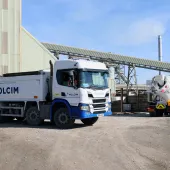Gender diversity in the workplace

Aggregate Industries lay plans to encourage more women workers amid escalating skills gap
WITH the skills deficit continuing to grow, Aggregate Industries have asserted that breaking down gender barriers is vital to safeguarding the future of the construction industry – and has laid some firm foundations to encourage more women into their own workforce.
Currently, as is typical with most traditionally male-dominated trade sectors, Aggregate Industries’ workforce population is made up of 84% males and 16% females. However, as part of a wider diversity and inclusion strategy, the company is committed to achieving a 20% gender balance by 2020 and a 30% gender balance by 2030 – a move, which it says, is incremental if the industry is to see its full potential.
Jo Hankinson, HR business partner at Aggregate Industries, said: ‘Although in the initial stages, we are investing heavily in our diversity and inclusion programme as a business over the next few years in order to ensure we have a more balanced workforce – with a particular focus on attracting more women.
‘The reality is this image of our industry as a male-centred one isn’t sustainable; if we are to plug the skills shortage then we can’t afford to dismiss half of the working population. Of course, as an industry, there is a lot of work to be done if we are to achieve this but the good news is that the wheels of change are in motion. Our research shows that more female students are taking up trade topics and we are seeing more female graduates every year.’
Aggregate Industries have continued to actively try to increase female intake for their graduate and higher apprenticeships schemes over recent years. As a result, a quarter (25%) of all graduates taken on in 2015 and 2016 were female and a third (33%) of higher apprentices employed were female.
Interestingly, research recently conducted by Aggregate Industries’ parent company, Lafarge Holcim, shows that women are slowly closing the gender gap when it comes to studying the trade-centred topics of Science and Engineering. In 2008, this figure stood at just 32.2% and rose to 40.3% in 2015.
Ms Hankinson commented: ‘Asides from improved corporate social responsibility, research shows that having a more diverse and inclusive workforce can help achieve a higher return on equity and better financial performance. This is because it can strengthen an organization’s intellectual capacity, breeding the ability to innovate and adapting in a fast-changing environment. Therefore, as we look to the future of the construction industry, it isn’t just about attracting more women, but more diversity all round.’
She added: ‘Our industry is an exciting, fruitful one – abundant with opportunity for everybody and if we want to thrive in the years to come we must break down the traditional macho mind-set once and for all.’









